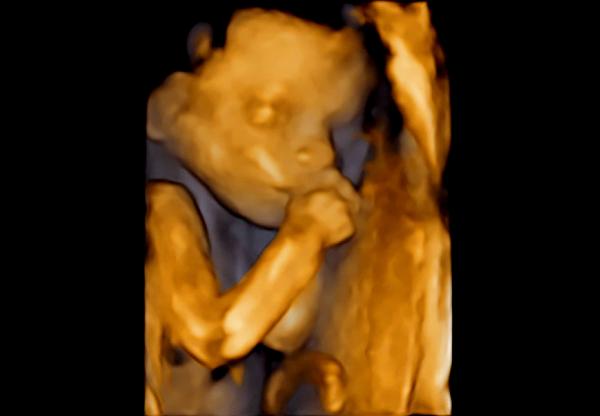
Michelle Cottle knew what it was like to have a traumatic pregnancy.
The first time she'd gotten pregnant, she didn't even know she was pregnant until she found herself in the emergency room in agony with a ruptured fallopian tube (the result of an ectopic pregnancy).
So the next time she got pregnant, it was breeze.
Because of the ectopic pregnancy, the doctors took scans of Cottle's uterus early in her gestation. The doctors told her everything was fine. At 12-weeks, her baby was cleared - no possibility of miscarriage. In fact, at 36 weeks gestation, the doctors told the Cottles that their baby was developing normally.
But five days later, Cottle looked at a still ultrasound monitor. There was no movement of a little one. No heartbeat. Her baby had died.
Cottle wrote, "I think I must have had an abstract idea that not all babies come home from hospital; that many are born unwell or become sick soon after birth. But my mind had never allowed me to register that sometimes babies that are full-term, babies that have nothing at all wrong with them, can die before they have even taken their first breath. And that for over half of these babies, no cause of death will be found."
Cottle's sorrow was complete.
She gave birth to a silent baby and loved her entirely before leaving her new daughter at the hospital.
She said, "We had to give her back and leave the hospital empty; empty belly, empty arms, empty soul."
To cope with all her emptiness, Michelle began a blog. Every day, Cottle and her husband write a letter to their lost baby, Orla.
As she wrote, the reality of the numbers hit Cottle: One in 200 pregnancies in the United Kingdom and one in 160 pregnancies in the United States ends in stillbirth. And for two thirds of those stillborn babies, doctors can't explain why they died.
Cottle's goal is to bring that reality to the eyes of the people who have the power to change it. She said,
"I know that I have survived the unimaginable and in Orla's name, I want to break the silence surrounding stillbirth so that one day fewer people will have to suffer. If we don't talk about these tragedies, there is no motivation from the government to fund much needed research. If we don't do research then we will continue to have one of the worst rates of stillbirth in the developed world. And that means that 11 families every single day will have to endure the torture of losing their much loved baby too as a result of stillbirth."
What research has uncovered
Recently, researchers are really digging in to understand why stillbirths still happen to healthy parents, seemingly out of nowhere.
In fact, researchers just discovered a connection between the way mothers sleep and stillbirths.
The study, published in British Journal of Obstetrics and Gynecology, confirmed what four smaller studies had also found: sleeping on the back is associated with term stillbirth. In fact, the research revealed that women who sleep on their backs during the third trimester of pregnancy have twice the risk of delivering a stillborn baby as those who sleep on their side.
The researchers can't veritably say why back-sleeping is connected to stillbirths. However, they hypothesize that laying on the back restricts blood flow to the baby because the weight of the baby and the womb puts pressure on the connecting blood vessels.
What should you do?
The way you sleep can be a hard habit to break. Here are some tips to help you learn to sleep on your side. (Remember this applies to naps as well as prolonged night-time sleeping.)
-
Put a pillow behind your back to prevent movement
-
Sew a tennis ball in the back of your shirt to remind your body to stay on your side
-
Sleep on a narrow sofa for a few weeks to train your body to break the habit
-
Use pillows or rolled towels to keep your ear, shoulder and hips aligned
-
Place a thin pillow between your knees to reduce stress on back and hips
-
If you wake up in the night, check your position and switch to your side
-
Remember to sleep on your side when napping as well

